Opera West Berlin
As one thumbs through the pages of Opera News, it’s virtually impossible to ignore the advertisements for exotic opera tours. The Metropolitan Opera Guild wants to tempt us to come to Salzburg, Prague, Vienna, Budapest, Venice, Parma and so on, presumably plopping its subscribers down in the very best seats available and, if that were not enough, often offering a snazzy cruise in the bargain. Then there are the Aria Tours and their “inspired itineraries” including Wexford, Toronto, Pesaro, Verona — and even Chicago, Dallas and Santa Fe, the latter cities being not so exotic in my book because I live in San Diego. I can get to and do get to those places (and to San Francisco and Los Angeles) on my own steam. But can I always get the best tickets? That’s the rub! I possibly can, but only in those very few nearby opera companies where Opera West still carries some clout.
I was feeling a tad wanderlusty in February when my eye fell on Great Performance Tours’ traditionally understated black-and-white ad running down the margin of a new issue of Opera News. Hmm. Berlin Opera Highlights, eh? Well, I had never been to Berlin before (one of those bucket list places, actually), and I had reached the age of 72 without ever having encountered a live performance of Wagner’s “Rienzi,” so I impulsively telephoned the company (which is mysteriously averse to email technology, I must say) and paid in full, including a “single supplement,” for the Berlin trip coming up at the end of April.
I wish I had taken their excellent suggestion to fly from Newark, New Jersey, to Tegel Airport in Berlin. This is really the only direct, non-stop flight from the east coast, at least as far as I can tell. I loathe connecting flights because I invariably miss the connection and am filled with overwhelming anxiety as a result. I usually fly from San Diego to New York City, stay there a few days, and then resume my travel on a non-stop direct flight to the city in Europe I want to visit. This time, unable to find a direct flight out of JFK, I made the truly fatal mistake of booking IBERIA AIRLINES through Madrid to Berlin. Almost the moment I made the reservation, I became aware of labor problems and pilot strikes at Iberia, and yet I was trapped into the reservation I had made through ORBITZ. When the day came, the flight to Madrid was late and I had less than an hour to run an endless multi-terminal race to my Berlin connection. It almost killed me, literally. I was hyperventilating and my heart was doing flip-flops. There were no wheelchair people to help me. But, the good news, I did make it alive to Berlin where I checked into the wonderful Kempinski Hotel Bristol on the Kurfürstendamm — and immediately met up with three other people taking the tour.
I will skip ahead to the end of the airline saga right now. I am presently getting nowhere with IBERIA AIRLINES. I had feared they would cancel the return flight to Madrid and on to JFK — and in fact, that flight was indeed cancelled as I had predicted. But before that, to calm down my obsessive-compulsive nerves, I had purchased a return flight on United Airlines, direct from Tegel to Newark. Only 8 hours and 10 minutes, by the way. The only way to fly. Unfortunately, I am not getting my money back from the uncaring folks at ORBITZ and IBERIA who are no help whatsoever — and I may never see my money again. So much for that part of the story.
The Kempinski Bristol is a marvelous place that in some ways recalls the imagined grand hotels of another era; and yet, it’s not very old at all. It dates from the early 1950s — and quite literally, everybody who was anybody stayed there when they came to what was then West Berlin. Their website lists an amazing number of luminaries. They have a wonderful indoor swimming pool, and the bars, public spaces and restaurants are excellent. The concierge staff is superlative, and the sight of bellboys (actually bell girls) in “Call for Philip Morris” uniforms is great fun. There are even bell captains (or should I say doormen?) that look like something out of F.W. Murnau’s “The Last Laugh,” that wonderful silent flick in which Emil Jannings frets over his great quasi-military looking coat.
The hotel doubtlessly has rooms superior to my “superior” room which, truth be told, showed many signs of wear and tear. The TV was ancient — but since I only used it to view my room bill on the last day, I hardly cared about that. There was a safe, closet, mini-bar, adequate bathroom and an extra inner door to shield one from voices in the corridor. The shower/tub arrangement was a nightmare for older folks; hard to enter and exit without breaking your neck. The wi-fi was far from free; damned expensive, in fact! But the large bed with two duvets was comfortable, and double paneled glass windows shielded one from the noise of the street. There was a curious statuette locked in a glass case: an elegantly dressed couple out for a night on the town.
The Omni hotel chain in the US has larger, cleaner rooms as a general rule, but the Kempinski, if not quite deluxe, has a charm and atmosphere that are hard to match. The staff is excellent and touches of Old World style abound despite the relative youth of the establishment. The large outdoor cafe, quite the place to sit on a warm afternoon, is especially alluring — although smokers tend to congregate there. Berlin smoking bans seem to go largely unenforced. I did, however, have a non-smoking floor. God help you if you do not smoke and get stuck on the smoking floor. Its smell is appalling. Be sure to get a Nichtraucheretage!
The first night of the tour consisted of a highly delightful and convivial meeting up of all us fellow opera travelers and our experienced and personable guide, David Roper. The so-called reception at 7:30 p.m. in a Bristol Bar annex was actually an elaborately catered delicious “finger” dinner with drinks. The tour members included several people, both male and female, traveling on their own, and quite a few people seemed to be writers who, in most cases, didn’t brag about their credentials. There were also many couples, of course — and many of the women dressed like fashion plates. As the days passed, I was amazed at the variety and quality of the apparel worn by both the men and women. I felt very much like a raggedy guy from the sticks. I’m afraid I’ll have to lose some weight before I can look smartly dressed again!
The first full day began for most of us at the Kempinski where champagne is among the healthy juice choices at their buffet. The food offerings included almost anything one could want (including “hotel” scrambled eggs that are always dry and you wonder why they bother), and — of course — you could order anything you didn’t see on display. As hotel buffets go, this one was just above the usual standard. I have to say, the smoked salmon was fabulous.
Then we all piled into a tour bus to see Berlin in that very special and confusing tour-bus way. We found ourselves in enormous traffic jams (caused by a visiting dignitary perhaps?), negotiated tight spaces where only the bravest of bus drivers can go, and ultimately visited Check Point Charlie (our only real full stop) and buzzed by the Brandenburg Gate, Tiergarten Park, the Reichstag, Alexanderplatz, Potsdamer Platz, Unter den Linen (or Ohne den Linden now that the trees are being torn up once again), Charlottenburg Palace, Museum Island, and the usual tourist attractions. The many tourists, in fact, seemed a bit discouraging. Later I never really managed to get to the fabulous looking Holocaust Memorial because I thought I might not get a taxi back to the hotel. And the lines to the Reichstag dome seemed discouraging. I do not like waiting in lines and dislike big crowds in museums.
That evening we were driven to the Deutsche Oper Berlin where we saw Leoš Janáček’s “Jenufa,” the first of five evenings there that included Wagner’s “Lohengrin” and “Rienzi,” a benefit concert offered by soprano Nina Stemme and conductor Donald Runnicles, and Verdi’s “Don Carlo.” The most unusual offering, of course, was the “Rienzi,” one of the main reasons I took the Berlin tour as opposed to some other. It was, unfortunately, not the whole thing (for reasons I will make clear), but it was a memorably provocative Regietheater production — available, BTW, on a DVD. Ultimately, on my own initiative, I also took in an appearance by Gustavo Dudamel at the Berlin Philharmonic, and on the way to and from Berlin I made NYC stopovers in which I saw “The Makropulos Case,” “Siegfried,” and a final dress rehearsal of “Billy Budd” at the Metropolitan Opera. Not to forget a performance of Mahler’s Sixth conducted by Alan Gilbert with the NY Phil at Carnegie Hall. So the “Jenufa” was just a part of a very rich two weeks of music.
For me, this “Jenufa,” thanks to a stunning performance by mezzo-soprano Jennifer Larmore, was the highlight of the whole trip. Larmore was searingly brilliant. Instead of the villainous creature so wonderfully portrayed by the likes of Leonie Rysanek, Larmore gave us a multi-dimensional human being who is driven into a sort of madness by her care for her daughter — very touchingly portrayed by Michaela Kaune. The sets, black and white minimalist affairs that reminded me of our West Coast artists who work with light, were quite brilliant, expanding and contracting with the emotions of the drama. A hyperlink here at Opera West (just below the cast list) should lead the reader to a large selection of pictures. Look for the word IMAGES on the Deutsche Oper page.
Donald Runnicles, apparently beloved both in San Francisco and Berlin, caught the idiom of the music perfectly. Joseph Kaiser made a highly convincing Steva, the cad who leaves poor Jenufa with child. Will Hartman, the redemptive Laca who takes Jenufa to another plane musically and emotionally, was also especially fine. Hanna Schwarz was the compelling if somewhat young looking grandmother.
Janáček’s “Jenufa”
Conductor: DONALD RUNNICLES
Director: CHRISTOF LOY
Stage design: DIRK BECKER
Costume design: JUDITH WEIHRAUCH
Light design: BERND PURKRABEK
Choreographer: THOMAS WILHELM
Dramaturge: CHRISTIAN ARSENI
Chorus master: WILLIAM SPAULDING
CAST:
Grandmother Buryja: HANNA SCHWARZ
Laca Klemen: WILL HARTMANN
Steva Buryji: JOSEPH KAISER
Kostelnicka: JENNIFER LARMORE
Jenufa: MICHAELA KAUNE
Mill foreman: SIMON PAULY
Mayor: STEPHEN BRONK
The mayor’s wife: LIANE KEEGAN
Karolka: MARTINA WELSCHENBACH
Farm girl: FIONNUALA MCCARTHY
Barena: JANA KURUCOVÁ
Jano: HILA FAHIMA
CHOR DER DEUTSCHEN OPER BERLIN
ORCHESTER DER DEUTSCHEN OPER BERLIN
On day two we all had the unexpected treat of being invited to the private home of Klaus and Lily Heiliger just outside Berlin to hear a chamber music concert and enjoy a luncheon of homemade soups and sandwiches. I have to say the pumpkin soup with toasted seeds was thoroughly memorable, as was the red borscht with sour cream and chives. The hosts were not only delightful, but obviously discerning art collectors whose walls were hung with intriguing contemporary paintings of the highest merit. The works played (from the dining room) were the Brahms Quartet Op. 25 in G Minor and the Haydn Trio Hob. XV/29 in E-Flat Major. The talented young musicians: Susanja Nielsen, violin; Tabea Kaempf, viola; Noa Chorin, cello; and Professor Jonathan Aner, piano. Herr Heiliger warned us that the “Lohengrin” had been panned in the local press, but, needless to say, we were committed to that opera early in the evening on that same day. As it turned out, it was not too bad after all. I am guessing the originally cast tenor crashed — but he was replaced by the fascinating Klaus Florian Vogt who does not sing quite like any other Heldentenor I have ever heard before.
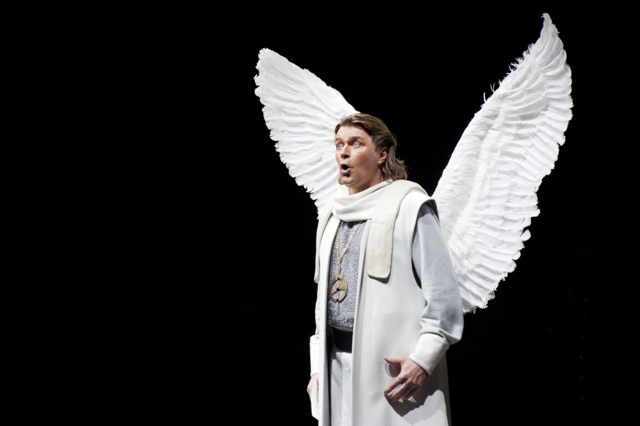
Vogt as the Swan Knight -- really an angel in this production. Photo courtesy of Deutsche Oper Berlin.
Richard Wagner’s LOHENGRIN
Conductor: DONALD RUNNICLES
Director: KASPER HOLTEN
Stage design, Costume design: STEFFEN AARFING
Light design: JESPER KONGSHAUG
Dramaturge: MIRIAM KONERT
Chorus Master: WILLIAM SPAULDING
CAST:
Heinrich: ALBERT DOHMEN
Lohengrin: KLAUS FLORIAN VOGT
Elsa: RICARDA MERBETH
Telramund: GORDON HAWKINS
Ortrud: PETRA LANG
King’s Herald: BASTIAAN EVERINK
1st Brabantic nobleman: PETER MAUS
2nd Brabantic nobleman: MATTHEW PEÑA
3rd Brabantic nobleman: MARKO MIMICA
4th Brabantic nobleman: TOBIAS KEHRER
1. Page: SASKIA MEUSEL
2. Page: ANDREA SCHWARZBACH
3. Page: CORDULA MESSER
4. Page: MARTINA METZLER
CHOR DER DEUTSCHEN OPER BERLIN
ORCHESTER DER DEUTSCHEN OPER BERLIN
The opera’s beleaguered heroine was soprano Ricarda Merbeth, a strong but not especially moving Elsa. As Ortrud, Petra Lang gained in strength and vocal security as the evening progressed — and the same can be said for her companion in evil paganism, Gordon Hawkins as Telramund. Albert Dohmen was a forceful Heinrich der Vogler. For his part, Vogt sang with a sustained lyricism one rarely hears in this part, and he clearly never tired. Amazing considering how LOUD things are in Berlin. Runnicles often seems to cover the voices, but the acoustics are very odd in this modern house. They certainly are not the distant muffled sounds of the pit at Bayreuth. The Deutsche Oper interior, by the way, reminds many Americans of their high school auditoriums. It is most certainly not a glamorous place, but one can hear very, very well — and Great Performance Tours secures the best seats imaginable.
The production concept on this “Lohengrin” is not too hard to decipher. Christianity triumphs over paganism (the old gods of Ortrud and Telramund), but it is a new merciless religion that does not restore Elsa’s brother Gottfried to power — or to life. The boy is brought on as a corpse. Lohengrin then gives a fist-bump quasi-Fascist salute. His wings really have nothing to do with the famous swan. They are the wings of an avenging angel. This is Christianity not as a loving, forgiving religion but as uncompromising power. Elsa has opened a Pandora’s Box.
The Fascism in “Rienzi: Der Letze der Tribunen” is even more pronounced. Berlin is certainly the perfect venue for these two provocative Regietheater productions!
In the morning some people took off for Sansouci in Potsdam, but I paid my own visit to the incredibly wonderful Gemäldegalerie, one of the world’s leading painting collections from the 13th to the 18th centuries. I spent hours there before returning by taxi for lunch in the always entertaining Kempinski sidewalk cafe. By then Berlin was in the midst of a heatwave taking the temperatures up to 82 and higher!
That night Wagner’s rarely performed “Rienzi: The Last of the Tribunes” received a sensational Regietheater treatment at the Deutsche Oper Berlin. Think Charlie Chaplin’s “The Great Dictator” meets Leni Riefenstahl’s “Triumph of the Will.” The production is available on a DVD and is well worth seeing. It seems the the six-hour version can never be reassembled in any authentic fashion, so this two and a half romp was what we got — and it was as fun as it was ghastly. It was almost impossible to take too seriously, and very well sung by everyone involved. Torsten Kerl is superb in the title role, and DANIELA SINDRAM is a name I want to remember. Imagine a Wagner trouser role! She was superb in this piece and is gifted with a great voice along with her acting skills. As for the story, I defer to Wikipedia on this one! Only so much bandwidth left here. Wagner hated it, but it’s tuneful like an Italian opera and never dull.
In the photo above, you can see what is most certainly Hitler’s bunker and a woman who resembles Eva Braun. If there were a close-up, we could also perhaps see Wagner’s manuscript score for “Rienzi,” that work reportedly one of Hitler’s prize possessions. It was allegedly lost in the bunker along with the dictator himself. Above this underground sanctuary, we can also see what is a clear parody of architect Albert Speer’s vision for the Third Reich.
“Rienzi: The Last of the Tribunes.”
Opera in five acts (but presented in a 2 1/2 hour version)
Poem by Richard Wagner, based on the novel Reins, or The Last of the Tribunes by Edward George Bulwer-Lytton
First performed on 20th October 1842 in Dresden
Premiered at the Deutsche Oper Berlin on 24th January 2010
In German language with German subtitles. (Yes, you read this right. NO ENGLISH help at the Deutsche Oper Berlin, so come prepared — just like in the old days!)
Conductor: SEBASTIAN LANG-LESSING
Director: PHILIPP STÖLZL
Co-Regie: MARA KUROTSCHKA
Stage-design: ULRIKE SIEGRIST / PHILIPP STÖLZL
Costume-design: KATHI MAURER / URSULA KUDRNA
Video: FETTFILM (MOMME HINRICHS UND TORGE MØLLER)
Choir Conductor: WILLIAM SPAULDING
CAST:
Rienzi: TORSTEN KERL
Irene: MANUELA UHL
Steffano Colonna: ANTE JERKUNICA
Adriano: DANIELA SINDRAM
Paolo Orsini: KRZYSZTOF SZUMANSKI
Cardinal Orvieto: LENUS CARLSON
Baroncelli: CLEMENS BIEBER
Cecco del Vecchio: STEPHEN BRONK
CHOR DER DEUTSCHEN OPER BERLIN
ORCHESTER DER DEUTSCHEN OPER BERLIN
Wonderful images from BERLIN site!
The next day after breakfast we were driven to Museum Island where I visited the Altes Museum (Old Museum). I am not wild about guided tours because the guide invariably talks about only one thing in great detail for about 30 minutes which drives me and my bad hip crazy. So I escaped next door to the Alte Nationalgalerie (Old National Gallery), a marvelous collection of German 19th century Romantic art.
Later that same day I walked a short distance from the Kempinski to see the Kaiser Wilhelm Memorial Church (in German: Kaiser-Wilhelm-Gedächtniskirche, but mostly just known as Gedächtniskirche). It is currently being renovated, but it and the nearby blue glass chapel and giant crucifixion statue are well worth visiting. I was surprised by what seemed to be well preserved Byzantine-style mosaics in the old church ruin. The entire structure, by the way, is concealed right now by a renovation skin of some sort.
That night we heard a fine concert at the Deutsche Opera Berlin with soprano Nina Stemme and conductor Donald Runnicles. There’s no question that she is now one of the finest Wagnerians around. I heard her Brunhilde last summer in San Francisco’s Wagner “Ring” cycle. And her Rachmaninoff is ravishing.
Program:
Wolfgang Amadé Mozart (1756 – 1791): Symphonie C-Dur KV 425
Richard Wagner (1813 – 1883): Wesendonck-Lieder
*** Pause ***
Sergej Rachmaninow (1873 – 1943): “The Isle of the Dead”
Tondichtung für großes Orchester, op. 29
Sergej Rachmaninow (1873 – 1943): From: Six Songs, op. 4
Nr. 4 Ne poj, krasavica! – (Oh do not sing to me)
Nr. 3 V molchan’i nochi taynoy – In the mysterious silence of the night
From: Twelve Songs, op.21
Nr. 7 Zdes’ khorosho – How beautiful it is here
From: Twelve Songs, op. 14
Nr. 11 Vesenniye vodi – Spring waters. (This was also the encore — although it sounded different to me the second time around.)
The concert was followed by a late-night dinner at a nearby restaurant named Don Giovanni’s. It was delicious (especially the antipasto) but most of us were very tired and eager to go to bed. In addition, the restrooms were located at the center of the earth along with the condemned Giovanni, so handicapped opera lovers had a bit of a problem when in their deepest need!
The next day included a postponed visit (if you recall the private concert) to the Bode Museum on the island’s northern tip. Another tour guide, a quite brilliant young lady, went on and on about minor details, so we saw very little and nothing much on our own. A friend of mine and I escaped to a museum cafe which served a hilarious (to me) boiled white sausage lunch. A hot bowl of water with two sausages and sweet mustard on the side? The Bode is packed with antique and Byzantine art, a superb collection. More interesting, however, is the nextdoor Pergamon Museum, the final museum of the island complex. It contains multiple reconstructed immense and historically significant buildings such as the Pergamon Altar and the Ishtar Gate of Babylon. It’s important to realize, of course, that as good and as organized these tours may be, you are not a prisoner and can always strike out of your own.
The tour left us one empty “free” evening and I solved that problem easily. I had a delightful Kempinski sidewalk dinner with a lovely lady named Gerladine Stutz before we taxied together to a concert of the Berliner Philharmoniker with Gustavo Dudamel conducting Ravel’s “Mother Goose Suite” and Richard Strauss’s “Also Sprach Zarathustra.” Violinist Leonidas Kovacos played the Korngold Concerto (which I hate) in place of a commissioned Osvaldo Golijov piece that did not arrive in time. (Surprise! He’s not only missing deadlines but being accused of plagiarism.) Dudamel led a very exciting “Also Sprach” (and wouldn’t you know I was sitting just beneath the pipe organ during the ffff opening chords). I confess the Berlin Philharmonic sounds better to me than the LA Phil, but I should probably keep my mouth shut. I have no idea why it sounds fuller, richer and more burnished. But it does.
After catching a taxi home, we met other travelers for late cocktails at the Bristol Bar. (Arriving home in California several days later, I heard Berlin’s permanent conductor, Sir Simon Rattle, conduct Bruckner’s Ninth with the Los Angeles Philharmonic. I am a LA Phil subscriber: ergo I hear Dudamel on a regular basis. This made the Dudamel/Rattle Berlin/LA switch-off seem rather fun and amusing. The Rattle concert, by the way, was really fabulous. Berlin’s hall looks much larger than Disney Hall, but the difference is only about 146 seats. Acoustics are excellent in both facilities. But the Berlin Hall seems designed for the physically fit only. Refreshments and other necessary facilities seem to be on the first floor only. Perhaps I didn’t explore enough.
I regret to say, I cannot remember the exact day I visited the Käthe-Kollwitz-Museum. It’s just a block or so from the Kempinski. A memorably depressing but marvelous artist!
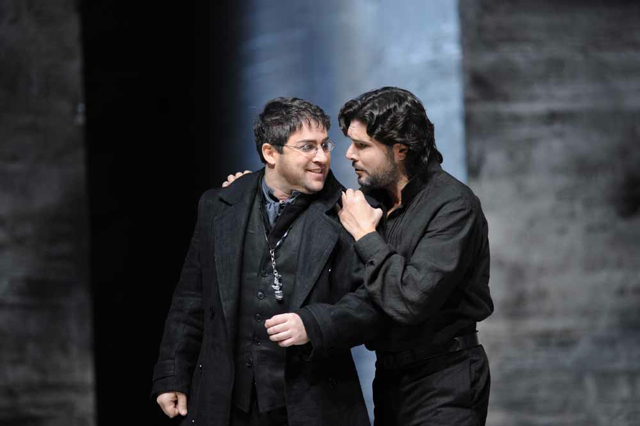
Don Carlo (right) MASSIMO GIORDANO as Rodrigo, and Marquis of Posa is MARKUS BRÜCK . Photo courtesy of Deutsche Oper Berlin.
The last tour day was free except for the opera in the evening. So I visited the Neue Nationalgalerie, both the regular modern art collection and the superb special exhibition of the paintings of Gerard Richter which was attracting huge crowds. I managed to skip by these zillions of people, however, because I had purchased a cheap 20-Euro three-day pass to Berlin’s great museums. That evening we saw “Don Carlo” — which started at 5 p.m. and only had one intermission. We were out of there at 8:30, the fastest “Don Carlo” in my memory.
Verdi’s “Don Carlo” at Deutsche Opera Berlin
Opera in four acts
Libretto by Joesph Méry and Camille Du Locle, based on the tragedy by Friedrich Schiller
First performance of the Italian version by Achille de Lauzières on 10th January 1884 at Milan
Premiered at the Deutsche Oper Berlin on 23rd October 2011
In Italian language with German subtitles. (No English. Sorry!)
Conductor: DONALD RUNNICLES
Stage Director, Stage Design, Lighting: MARCO ARTURO MARELLI
Costume Design: DAGMAR NIEFIND
Dramaturgy: ANDREAS K. W. MEYER
Chorus Master: WILLIAM SPAULDING
King Philip of Spain: ALASTAIR MILES
Don Carlo: MASSIMO GIORDANO
Rodrigo, Marquis of Posa: MARKUS BRÜCK
Inquisitor: KRISTINN SIGMUNDSSON
A monk BASTIAAN EVERINK
Elisabeth of Valois MEAGAN MILLER
Princess of Eboli ANNA SMIRNOVA
The page Thibaut MARTINA WELSCHENBACH
Count of Lerma / Herold: MATTHEW PEÑA
A voice: KATHRYN LEWEK
Flemish deputies: ALEXEY BOGDANCHIKOV
Flemish deputies: KRZYSZTOF SZUMANSKI
Flemish deputies: SIMON PAULY
Flemish deputies: JÖRN SCHÜMANN
Flemish deputies: MARKO MIMICA
Flemish deputies: TOBIAS KEHRER
CHOR DER DEUTSCHEN OPER BERLIN
This was a “brutalist” production with stark blocks of what looked like concrete constantly moving into different configurations. Only the male singers really impressed, especially Miles, Massimo Giordano (not the OTHER Giordano, thank goodness), Kristinn Sigmundsson and Markus Brück. The women were struggling with trying to make something great out of what they were doing, but they simply missed the mark. Runnicles dashed thorough the score impressively without much subtlety at any point. If you look at the IMAGES, things seem much better than they were. In fact, they look terrific!
“Don Carlo” is one of my favorite Verdi operas — and one of the operas I treasure along with the greatest of all time. It’s easy for me to be disappointed with productions of it. This was — well, just OK. But I enjoyed it nonetheless.
On the following morning, the Kempinski supplied departing travelers with pots of coffee, piles of croissants and pitchers of orange juice — all right out in the lobby where we were waiting for our luggage to be loaded. Many people had their own transportation arrangements, but I was now taking the recommended United flight out of Tegel along with several fellow travelers — including the impressive and patient and always helpful David Roper. The eight-hour flight went without a hitch and I spent three delightful days in New York before returning to San Diego. I stayed at the Omni Berkshire Hotel, ate lunch at the nearby The Modern (a superb restaurant), visited the Metropolitan Museum of Art’s new American Wing, saw Janáček’s “The Makropulos Case” with Karita Mattila at the Metropolitan Opera, saw the final dress rehearsal of “Billy Budd” at the Metropolitan Opera, had lunch at the touristy and overrated Carnegie Deli (hot pastrami sandwich and pickles), and heard Mahler’s Sixth Symphony at Carnegie Hall with Alan Gilbert conducting the New York Philharmonic.
Now — if I can just get my money back from Iberia Airlines.
I look forward to another Great Performance Tours adventure in the future. I hope they are planning on going to Wexford, Ireland. Frankly, from what I have seen with my own eyes and heard from my fellow travelers, you cannot go wrong. And I might add, the people you meet are all interesting. But if making fast friends forever is your goal, that may be a little tricky. Do not expect everybody to like the same things you do. I even met someone who hates Verdi! On an opera tour? It defies credulity.
Click on comments tabs below to read or post comments.
Dave Gregson

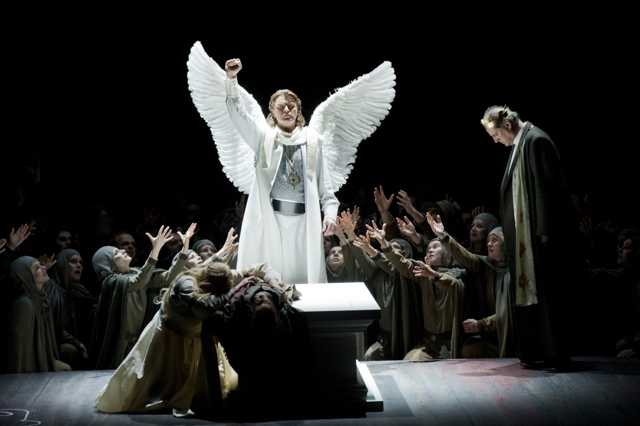
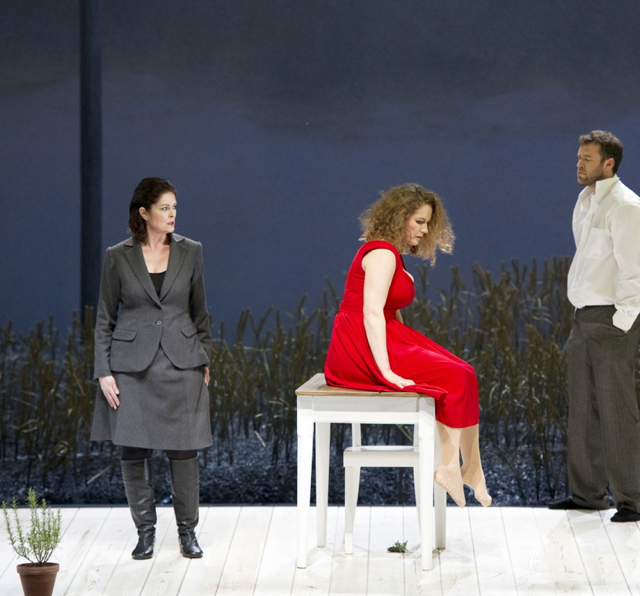
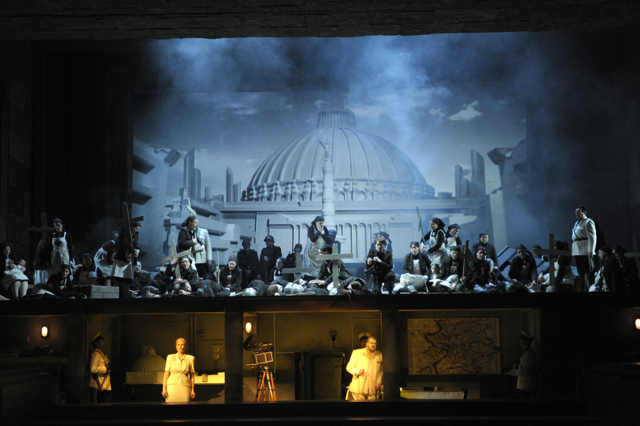
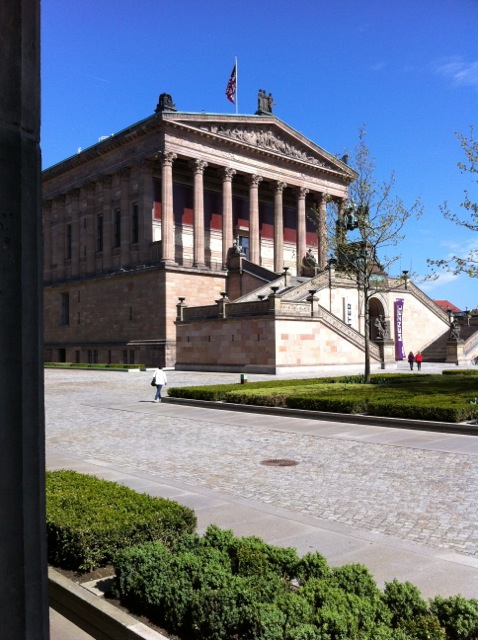
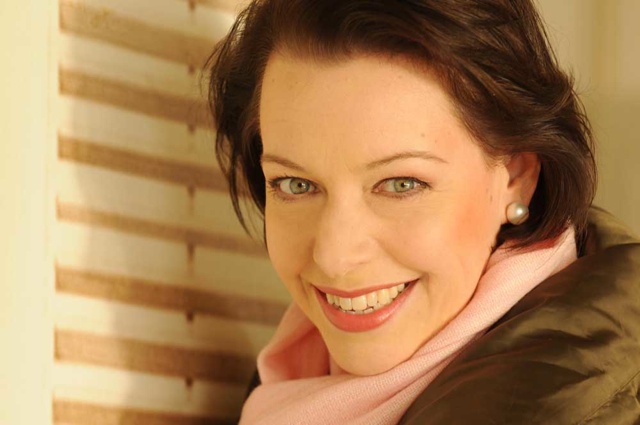
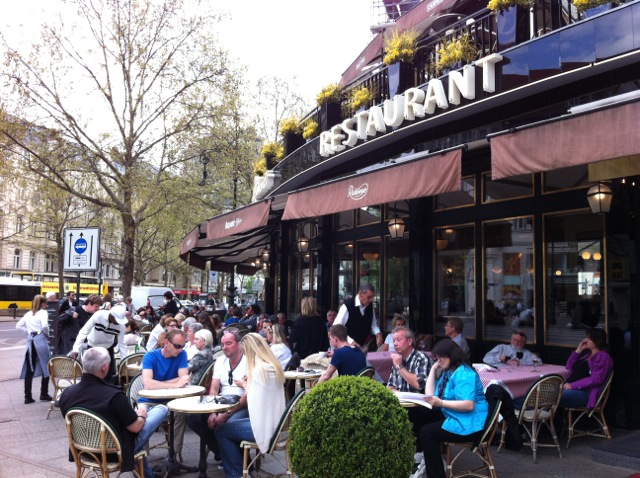
David…What a wonderful review of the “Berlin Highlights” as well as reviews of the other operas you have witnessed in the near past. The Berlin tour was much enjoyed by me, and meeting you and chatting each day/evening was an added pleasure. I concur with your reviews of the Berlin experience – very well said I think! I will certainly keep up with your “Blog”. Again, great meeting you and hopefully we will cross paths again along the way. Cheers! Mac Stiles
Thanks so much Mac. It was a great pleasure meeting you too. I hope to take another tour somewhere in the world as soon as I can.
Hi David,
Thanks for bringing back lovely memories of our Berlin GPT tour 2 weeks back! I totally concur and hope you are well and enjoying operatic life.
cheers,
Jean
It was a terrific experience meeting and getting to know you. You were the first face I saw as I charged breathlessly into the Kempinski. I hope our paths cross again soon.
David
Me too dear David!
So many wonderful memories and so beautifully captured and encapsulated our journey and memories. Stay well and aufwiedersehen.